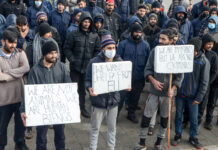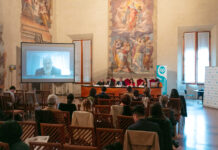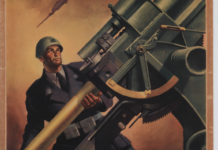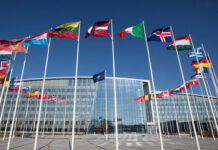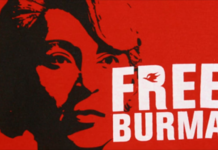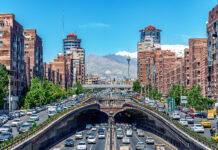Latest developments
The current wave of ‘red tagging’ in the Philippines is the practice of publicly identifying individuals and groups as ‘red’ supporters of communist rebels, that is to say, terrorists. Politicians, human rights activists, lawyers and religious groups have all been red-tagged. The phenomenon is the appendix of a low-intensity conflict that reopened and continued without interruption between the army and the communist rebels, especially in the central areas of the archipelago. The Duterte government has completely overturned the policy based on ‘peace and development’ criteria, pursued until 2018, in the relationship with communist rebels. Since then, the President has launched a fierce repressive campaign giving the order to “exterminate all rebels”.
Negotiations were cancelled: at that time the people of the provinces in the central part of the Mindanao Island and in the Eastern Visayas region saw their past plan of integration and socio-economic cooperation fade away, as well as all forms of amnesty for the guerrillas. The militarization of the territory has generated widespread human rights violations and extrajudicial executions committed by the army, largely left unpunished. Local community representatives, indigenous leaders and members of NGOs were suspected of supporting guerrilla warfare. In a military operation known as ‘Bloody Sunday’, on 7 March 2021, nine activists belonging to various civil society organizations were killed in targeted executions carried out by the security forces. In the Southern Philippines, in Bangsamoro Autonomous Region, there have also been clashes between jihadist insurgents and security forces.
While the martial law proclaimed in the aftermath of the jihadist siege on the Marawi city was lifted in late 2019, the Bangsamoro Islamic Freedom Fighters (BIFF) fighters and other rebel groups linked to the self-proclaimed Islamic State have carried out raids and ambushes on military patrols. These groups rejected the ‘Bangsamoro Basic Law’: approved in 2019 and confirmed by a popular referendum, this legal regime established the new Muslim Autonomous Region. An armed conflict at sea has also been occurring: tensions persist between the Philippines and China over the presence of Chinese naval forces in the South China Sea. Manila has lodged a diplomatic protest for the illicit presence of the Chinese coast guard in its own territorial waters.
In January 2022 Manila has finalised a deal to acquire a shore-based anti-ship missile system from India for nearly $375 million to beef up its navy, the Southeast Asian nation’s defence minister said. The country is in the late stages of a five-year, 300 billion pesos ($5.85 billion) project to modernise its military’s outdated hardware that includes warships from World War Two and helicopters used by the United States in the Vietnam War.
What is being fought for
There are two fronts of the conflict that has been raging for decades in the Philippines: the governmental army, committed to countering terrorist groups and jihadists, and guerrillas of Maoist inspiration. Starting from the seventies of the last century, the Moro National Liberation Front (MNLF) started as a secessionist armed movement in the island of Mindanao, soon joined by the Moro Islamic Liberation Front (MILF), fighting for autonomy (or sometimes for secession). In a conflict that has caused over 150 thousand victims in fifty years, the Autonomous Region in Muslim Mindanao has stolen fertile ground from Islamic fundamentalist groups such as Abu Sayyaf (‘The Brando of God’), who sought a cross-party alliance with the Islamic State.
In the guerrilla war, the New People’s Army (NPA), linked to the Communist Party of the Philippines, has promoted an armed rebellion in the central and southern area of the archipelago since the nineties. The conflict between government forces and communist rebels, which has claimed more than 40,000 lives in decades, was rekindled in November 2018, when President Duterte officially cancelled the peace negotiations with the Communist Party and branded the New People’s Army as a ‘terrorist group’. Since then, the country has been Shaken by a relentless fight, with a new wave of violence targeting also civilians, activists and indigenous communities.
Country overview
Rodrigo Duterte, elected President of the Philippines in May 2016, has conquered the nation in six months, giving a turning point to political, social and cultural life in a populist and authoritarian sense. Consistently at the highest levels of popular acceptance (with an average of 70% on a national basis), Duterte won the midterm elections in May 2019 and, at the head of the Coalition for Change, ruled with an overwhelming majority in Parliament (over 70% of the seats).
During the last three years of his term, the President reaffirmed his populist policies based on a campaign that earned him a strong consensus among the masses: the ‘War on Drugs’ conducted by the police with the support of death squads, which are intended to carry out the mass murder of drug dealers and addicts.
According to Amnesty International and Human Rights Watch, since 2016 the Filipino police have killed and paid others to kill thousands of alleged drug offenders in a wave of extrajudicial executions that claimed the lives of over 30,000 civilians, generating global outrage. Despite Filipino civil society organisations’ protests and the alarm launched on the urgency of “defending democracy and human rights, against thousands of extrajudicial killings and impunity”, Duterte triumphantly reaffirmed ‘the war on drugs’ campaign in his second three-year presidential term which expires in May 2022.
Regardless of the complaint filed before the International Criminal Court or the consternation expressed at the UN, even during the COVID-19 pandemic, Duterte has continued to put security and legality at the centre of politics. Indeed, in his strong approach to catalyze the attention of public opinion, he has used the same expressions and paradigms to describe the ‘war on Covid’, the ‘war on drugs’, the ‘war on communist rebellion’ and that on jihadism in the South of the country.
On the internal side, the different fronts of the conflict appeared strictly functional to keep high the impression of a need for a sheriff-president (as Duterte presented himself from day one) and for the pervasive presence of military and police forces, which led to a progressive militarization of cities and rural areas. The forces of law and order deployed throughout the territory were presented and perceived as necessary to progress on the following issues: ensuring compliance with Covid-19 preventive and control measures (in a country heavily affected by the pandemic and to which several lockdowns have been imposed); eliminating crime and drug trafficking from society; countering the scourge of the communist rebellion that mainly affects the central part of the archipelago; and stopping the awakening of jihadism in the Southern Philippines, renewed by the presence of the Islamic State. One of these internal ‘issues’ that the Duterte government has not faced with the necessary decision is that of poverty and indigence, aggravated by the pandemic emergency, particularly in terms of their deleterious effects, such as hitting a vast informal sector which includes thousands of daily wage earners and transport workers, traders and craftsmen, who populate Manila and the largest cities; and suddenly decreasing the conspicuous flow of remittance from abroad, a crucial crutch for the Philippines economy. It is estimated that 10 million Filipinos who live and work abroad contribute, with money sent home, to make up 10% of the Gross Domestic Product (GDP). A nation irreparably marked by constant natural disasters, the Philippines has one of the fastest-growing economies in Southeast Asia, despite a sharp slowdown due to the COVID-19 pandemic. However, the high regional disparities (GDP in the capital is five times higher than that of the island of Mindanao) and a national poverty rate that remains at high levels (half of the households are at risk of poverty, over 12 million people) are still open challenges.
Key figure or organization: Sara Duterte, heir to the throne
She is his daughter and also his ‘dauphine’. Sara Zimmermann Duterte, known as Inday Sara, is definitely retracing her father’s footsteps. She was the youngest, and the first woman to be elected mayor of Davao city, on the island of Mindanao, to replace her father who was elected President of the Philippines. Now, 43-year-old Sara is preparing to take her place at the top of the power scheme. Pushed by polls that seem to grant her a wide consensus (just as it was for her father), Sara is a strong candidate in the May 2022 presidential election. Its presence on the political scene, besides being reassuring for the electorate and representing a guarantee of continuity, Sara is in the wake of a phenomenon that for a long time crossed Filipino politics, that is familism and political and economic power firmly in the hands of established dynasties.
FOCUS 1 – An announced sentence
Filipino journalist Maria Ressa and her colleague Reynaldo Santos Jr. were accused of ‘cyber libel’ and found guilty by a court in Manila, in June 2020, due to a story published by the news website Rappler in 2012. The court has granted bail pending appeal, but they risk up to seven years in prison. According to the National Union of Journalists, it was a “manipulated accusation” and “an act of persecution by an oppressor government” against democratic values and human rights defenders. Amal Clooney, one of Ressa’s lawyers, has described the case as “one of the most brazen of the last ten years.” The story sheds a dangerous light on press freedom in a nation where President Rodrigo Duterte openly addresses journalists with vulgar words. The sham-controlled trial confirms that the Philippines is one of the world’s most dangerous countries for reporters. According to the Committee to Protect Journalists, 145 journalists have lost their lives in the country in the last 30 years.
FOCUS 2 – Between Covid and jihad
Islamic radical groups continue to prosper in the South in the shadows of the pandemic, while Marawi city – occupied in 2017 by the so-called Islamic State’s militia, driven out only after a long military siege – is still struggling in the process of reconstruction. Recruiters of the Islamic State exploit the misery and social discontent to recruit a new generation of fighters to strike new targets. According to the authorities and some analysts, terrorist groups are leveraging on the crisis caused by the Covid-19 pandemic and the quarantine measures imposed by the government to capitalize on the frustration among young people and make them join the jihadist struggle.



